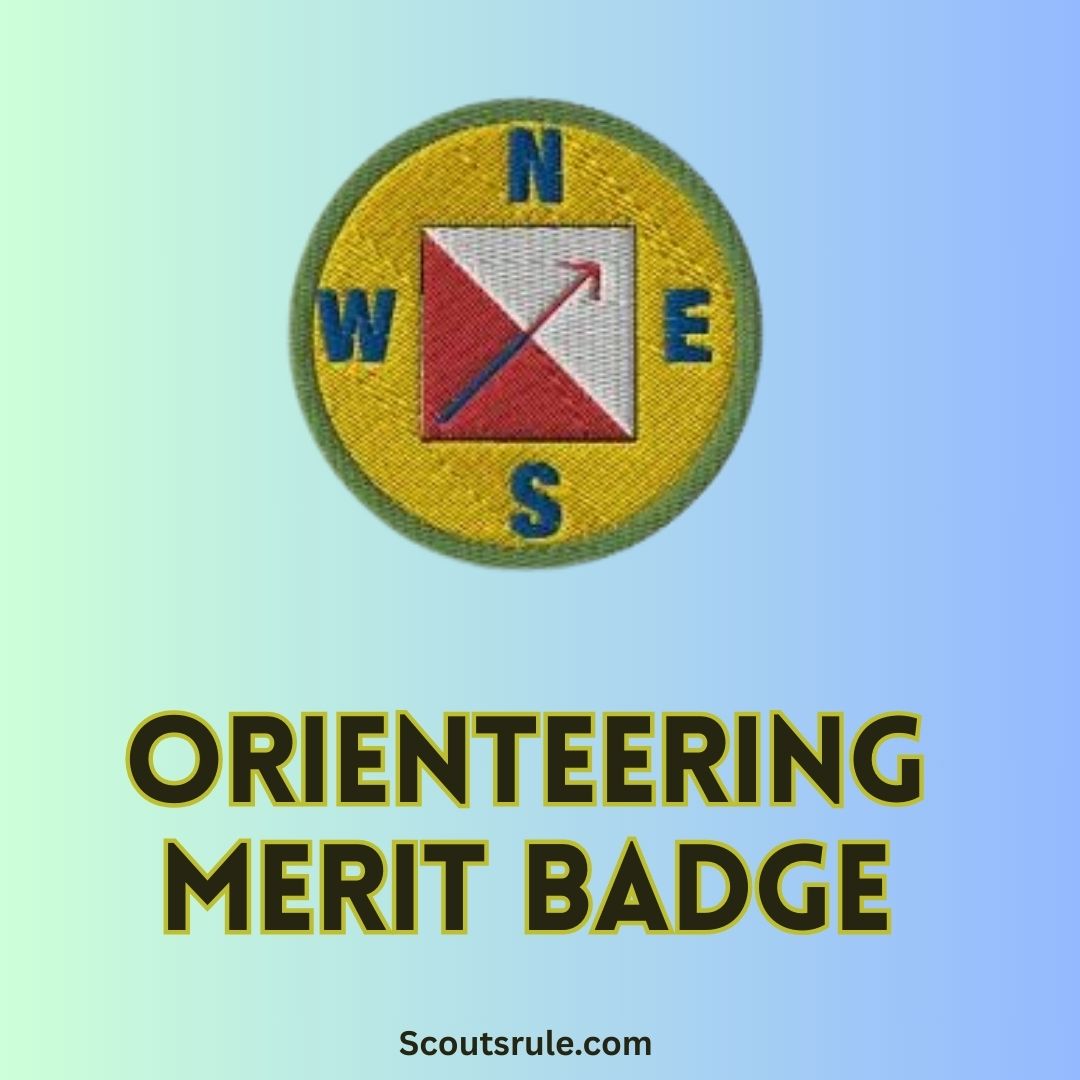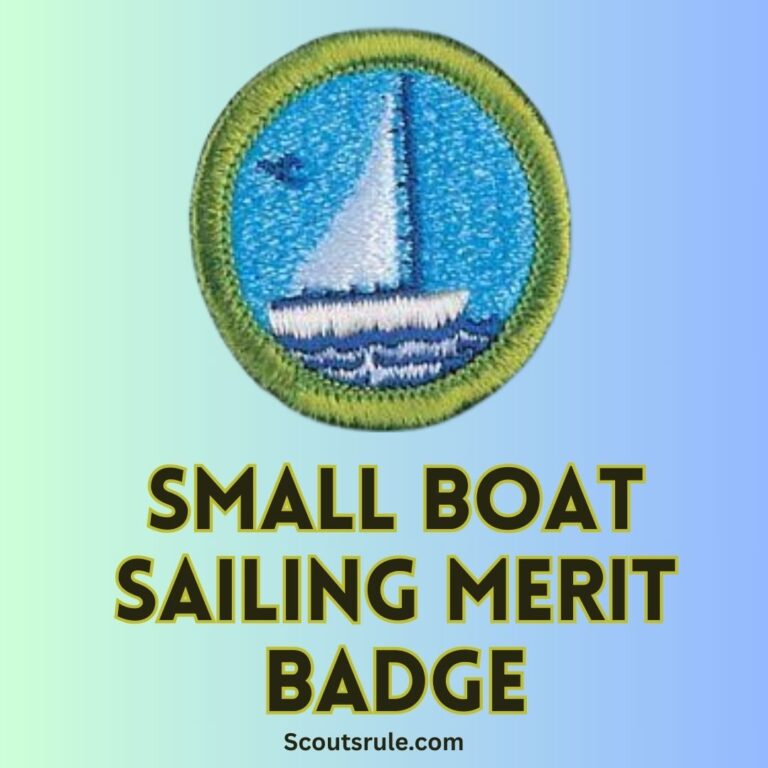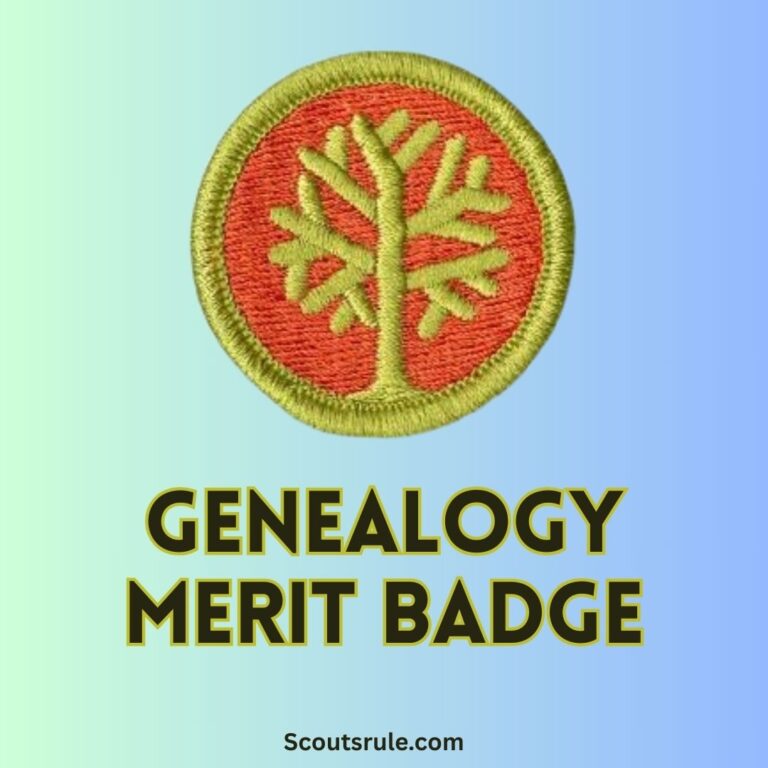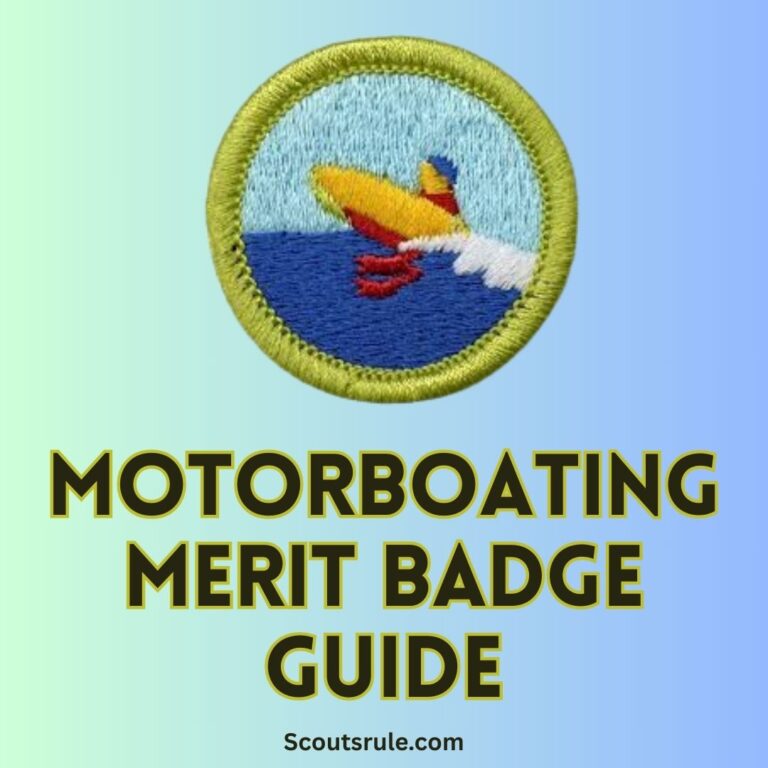
Orienteering is a sport and skill that combines navigation and physical activity. Participants use a map and compass to navigate through unfamiliar terrain, locating specific checkpoints along the way. This activity fosters problem-solving, teamwork, and a deep appreciation for the outdoors. The Orienteering Merit Badge equips Scouts with the knowledge and skills to confidently traverse landscapes, whether in dense forests, open fields, or rugged mountains.
Post Contents
- 1. First Aid Knowledge
- 2. Understanding Orienteering
- 3. Compass Skills
- 4. Topographic Maps
- 5. Orienteering Courses
- 6. Pacing and Distance Estimation
- 7. International Control Description Symbols
- 8. Advanced Orienteering Techniques
- 9. Participation in Orienteering Events
- 10. Setting Up an Orienteering Course
- 11. Acting as an Official
- 12. Teaching Orienteering Techniques
- 1. Handrails
- 2. Collecting, Check-Off, and Catching Features
- 3. Attack Point
- 4. Aiming Off or Offset Technique
- 5. Reading Ahead
- 6. Contouring
- 7. Relocation
- 8. Rough Versus Fine Orienteering
- 9. Route Choice
- 1. Handrails
- 2. Collecting, Check-Off, and Catching Features
- 3. Attack Point
- 4. Aiming Off or Offset Technique
- 5. Reading Ahead
- 6. Contouring
- 7. Relocation
- 8. Rough Versus Fine Orienteering
- 9. Route Choice
- Conclusion
1. First Aid Knowledge
Orienteering often takes place in challenging outdoor environments where understanding and applying first aid can make a significant difference. Below is a detailed guide to the common first aid concerns associated with orienteering and how to address them:
1. Physical Conditioning
- Importance: Adequate physical preparation reduces the risk of injuries like sprains and strains during orienteering.
- Prevention:
- Train regularly to build endurance, strength, and flexibility.
- Perform warm-up exercises to prepare muscles for activity.
- First Aid: For muscle strains, rest the affected area, apply a cold compress to reduce swelling, and elevate if possible. Stretch gently only after the acute pain subsides.
2. Dehydration
- Symptoms: Thirst, dry mouth, fatigue, dizziness, and dark-colored urine.
- Prevention:
- Drink water consistently before, during, and after the activity.
- Carry a water bottle or hydration pack during orienteering.
- First Aid: Provide fluids immediately. Encourage small, frequent sips rather than large amounts all at once to avoid discomfort.
3. Heat Exhaustion
- Symptoms: Heavy sweating, weakness, dizziness, nausea, and clammy skin.
- Prevention:
- Stay hydrated and wear lightweight, breathable clothing.
- Avoid overexertion during the hottest parts of the day.
- First Aid: Move the person to a shaded or cool area, loosen tight clothing, and provide water. Cool the body with damp towels or fanning.
4. Heatstroke
- Symptoms: High body temperature (above 103°F/39.4°C), rapid pulse, confusion, hot and dry skin, or even unconsciousness.
- Prevention: Avoid prolonged exposure to extreme heat and ensure proper hydration.
- First Aid: This is a medical emergency. Call for immediate help. While waiting, move the person to a cool area, sponge them with water, and fan vigorously to lower body temperature.
5. Sunburn
- Symptoms: Red, painful, or peeling skin caused by overexposure to the sun.
- Prevention: Apply sunscreen (SPF 30 or higher), wear a hat, and use clothing to cover exposed skin.
- First Aid: Cool the skin with damp cloths, apply aloe vera gel, and stay hydrated. Avoid further sun exposure until the burn heals.
6. Hypothermia
- Symptoms: Shivering, slurred speech, confusion, and exhaustion.
- Prevention: Wear appropriate layers for the weather and keep dry.
- First Aid: Move the person to a warm shelter, remove wet clothing, and wrap them in dry blankets. Provide warm (not hot) drinks to raise body temperature gradually.
7. Cuts, Abrasions, and Scratches
- Prevention: Wear long sleeves and pants to minimize skin exposure to vegetation and sharp objects.
- First Aid:
- Clean the wound with water to remove debris.
- Apply antiseptic and cover with a clean bandage.
- Monitor for signs of infection like redness or swelling.
8. Blisters
- Prevention: Wear moisture-wicking socks and well-fitted footwear. Apply moleskin or blister prevention patches to areas prone to friction.
- First Aid: If a blister forms:
- Avoid popping it unless absolutely necessary.
- If popped, clean with antiseptic and cover with a sterile bandage to protect the area.
9. Stings and Bites
- Symptoms: Pain, redness, swelling, or itching at the site.
- Prevention: Use insect repellent and wear long clothing to reduce exposure.
- First Aid:
- Remove stingers with a credit card (not tweezers).
- Wash the area, apply a cold pack, and use hydrocortisone cream or antihistamines to reduce swelling and itching.
- Seek medical attention if an allergic reaction occurs (e.g., difficulty breathing or swelling beyond the sting site).
10. Snakebite
- Symptoms: Pain and swelling at the site, potential discoloration, and systemic symptoms like nausea or difficulty breathing (depending on the snake’s venom).
- Prevention: Avoid tall grass or rocky areas without checking your surroundings. Wear sturdy boots and long pants.
- First Aid:
- Remain calm and keep the bitten limb immobilized below heart level.
- Do not suck out venom or use a tourniquet.
- Seek medical help immediately and note the snake’s appearance if possible.
11. Poisonous and Pesky Plants
- Examples: Poison ivy, poison oak, nettles, or other irritating plants.
- Prevention: Learn to identify these plants in your area and avoid contact. Wear long sleeves and gloves in densely vegetated areas.
- First Aid:
- Wash the area with soap and water as soon as possible.
- Apply calamine lotion or hydrocortisone cream to relieve itching.
- Avoid scratching to prevent secondary infections.
2. Understanding Orienteering
Requirement:
Explain what orienteering is and why it is important.
Explanation:
Orienteering is more than just a sport; it’s a survival skill. Scouts learn to navigate using maps and compasses, developing spatial awareness and critical thinking. Orienteering is important because:
- It enhances problem-solving abilities.
- It fosters teamwork and communication.
- It builds confidence in outdoor exploration.
- It connects participants with nature, promoting environmental stewardship.
3. Compass Skills
Requirement:
- Explain how a compass works and describe its features.
- Show how to take a compass bearing and follow it in the field.
Explanation:
A compass is an essential tool for navigation. Scouts must understand its components, including the needle, baseplate, and rotating bezel. Key skills include:
- Taking Bearings: Align the compass with a map to determine direction.
- Following Bearings: Use the compass to navigate accurately in the field.
- Understanding Magnetic North: Learn how the compass needle aligns with Earth’s magnetic field.
4. Topographic Maps
Requirement:
- Explain how a topographic map shows terrain features and identify them in the field.
- Point out and name 10 symbols on a topographic map.
- Explain declination and its importance when using a map and compass together.
- Show a topographic map with magnetic north-south lines.
Explanation:
Topographic maps are detailed representations of terrain, showing elevation, landmarks, and natural features. Scouts must:
- Read Contour Lines: Understand how lines indicate elevation changes.
- Identify Symbols: Recognize features like rivers, trails, and buildings.
- Adjust for Declination: Account for the difference between magnetic north and true north when navigating.
- Orient Maps: Use a compass to align the map with the landscape.
5. Orienteering Courses
Requirement:
- Complete orienteering courses, demonstrating navigation skills and understanding of map reading.
- Create and set up your own orienteering course.
Explanation:
Orienteering courses challenge Scouts to apply their skills in real-world scenarios. Completing courses involves:
- Navigating Checkpoints: Use maps and compasses to locate specific points.
- Time Management: Plan routes efficiently to minimize travel time.
Creating a course requires: - Designing Checkpoints: Choose locations that test navigation skills.
- Providing Instructions: Ensure participants understand the course layout and rules.
6. Pacing and Distance Estimation
Requirement:
Set up a 100-meter pace course. Determine your walking and running pace for 100 meters. Explain why pace-counting is important.
Explanation:
Pace-counting helps Scouts estimate distances without relying solely on maps or compasses. Steps include:
- Measuring Stride Length: Calculate the average distance covered per step.
- Counting Steps: Use stride length to estimate distances traveled.
- Practical Application: Combine pace-counting with map reading for accurate navigation.
7. International Control Description Symbols
Requirement:
Identify 20 international control description symbols and explain their meanings. Show a control description sheet and explain the information provided.
Explanation:
Control description symbols are standardized icons used in orienteering to describe checkpoints. Scouts must:
- Learn Symbols: Understand icons representing terrain features, obstacles, and checkpoint locations.
- Interpret Sheets: Use control description sheets to plan routes and navigate efficiently.
8. Advanced Orienteering Techniques
Requirement:
Explain terms like attack point, collecting feature, catching feature, aiming off, contouring, reading ahead, handrail, relocation, rough versus fine orienteering.
Explanation:
These techniques enhance navigation skills:
- Attack Point: A recognizable feature near a checkpoint used for precise navigation.
- Collecting Feature: Landmarks that confirm you’re on the right path.
- Catching Feature: A feature that prevents you from overshooting a checkpoint.
- Aiming Off: Deliberately aiming to one side of a feature for easier navigation.
- Contouring: Following elevation lines to avoid climbing or descending unnecessarily.
- Reading Ahead: Planning your route before moving.
- Handrail: Using linear features like trails or rivers as guides.
- Relocation: Finding your position after getting lost.
- Rough vs. Fine Orienteering: Balancing speed and precision based on terrain.
9. Participation in Orienteering Events
Requirement:
Take part in three orienteering events, including one cross-country course. Write a report after each event.
Explanation:
Participating in events allows Scouts to test their skills in competitive settings. Reports should include:
- Master Map and Control Description Sheet: Document the course layout.
- Route Taken: Analyze navigation choices and identify areas for improvement.
- Performance Review: Reflect on strengths and weaknesses, suggesting strategies for future events.
10. Setting Up an Orienteering Course
Requirement:
Set up a cross-country or score orienteering course. Prepare the master map and control description sheet.
Explanation:
Creating a course demonstrates mastery of orienteering. Steps include:
- Choosing Locations: Select diverse checkpoints to challenge participants.
- Designing Maps: Ensure maps are accurate and easy to read.
- Setting Rules: Define objectives and time limits for the course.
11. Acting as an Official
Requirement:
Act as an official during an orienteering event.
Explanation:
Officials oversee events, ensuring fairness and safety. Responsibilities include:
- Monitoring Participants: Track progress and enforce rules.
- Providing Assistance: Help participants who encounter difficulties.
- Evaluating Performance: Assess navigation skills and provide feedback.
12. Teaching Orienteering Techniques
Here’s a detailed breakdown of orienteering techniques, which are essential for navigating terrain efficiently and effectively during orienteering events or outdoor exploration. Each method improves decision-making, navigation accuracy, and overall strategy:
1. Handrails
Description:
Handrails are linear features in the terrain—such as trails, streams, ridges, or fences—that guide navigation and provide clear reference points. They help you stay oriented without constantly checking your map or compass.
How to Use:
- Look for nearby handrails on your map (e.g., a river or trail) that run in the general direction of your destination.
- Follow the feature until you reach your target or a key waypoint.
Benefits:
Handrails simplify navigation by offering a clear path to follow, minimizing errors.
2. Collecting, Check-Off, and Catching Features
Description:
These features help confirm your progress and prevent overshooting your destination.
- Collecting Features: Landmarks or terrain details that confirm you are moving in the correct direction.
- Check-Off Features: Intermediate points that you can identify along your route to verify you’re on track.
- Catching Features: Large or prominent features beyond your destination that act as a safety net, stopping you if you miss your checkpoint.
How to Use:
- Identify these features on your map during route planning.
- Pay attention to them while navigating to ensure accuracy.
Benefits:
These features create layers of confirmation, reducing the likelihood of errors.
3. Attack Point
Description:
An attack point is a recognizable feature located close to your target or checkpoint. From the attack point, you navigate directly to your destination with high precision.
How to Use:
- Select a large, easily identifiable landmark as your attack point.
- Plan a route to the attack point and then use fine navigation to locate your checkpoint.
Benefits:
Attack points minimize the risk of getting lost in areas with few distinct features and allow you to focus on precise navigation when closer to the goal.
4. Aiming Off or Offset Technique
Description:
Aiming off involves deliberately navigating slightly to one side (left or right) of your intended destination to avoid uncertainty when approaching it.
How to Use:
- If you are traveling toward a feature like a trail junction, aim slightly left or right so that when you reach the trail, you know immediately which direction to turn.
- Adjust your route once you’ve hit your intended “offset” location.
Benefits:
This technique ensures you avoid overshooting your destination and reduces time spent searching for it.
5. Reading Ahead
Description:
Reading ahead is the process of planning multiple steps of your route in advance to save time and reduce hesitation.
How to Use:
- While navigating to your current checkpoint, anticipate the next feature or decision point you will encounter.
- Continuously scan the map and stay aware of your surroundings.
Benefits:
Reading ahead improves efficiency and reduces distractions during navigation.
6. Contouring
Description:
Contouring involves following lines of equal elevation (contour lines) on a map to avoid unnecessary climbing or descending.
How to Use:
- Study the contour lines on your map and find routes that allow you to stay at a consistent elevation.
- Use natural features like ridges and valleys to conserve energy and maintain your position.
Benefits:
Contouring prevents fatigue and keeps navigation simpler when moving across hilly terrain.
7. Relocation
Description:
Relocation is the process of determining your position after becoming disoriented or lost.
How to Use:
- Stop immediately and analyze your surroundings for landmarks or features.
- Compare visible features with your map to pinpoint your location.
- If necessary, retrace your steps to the last known point and reattempt navigation.
Benefits:
Relocation minimizes wasted time and helps you recover your route without unnecessary stress.
8. Rough Versus Fine Orienteering
Description:
This technique involves adjusting your navigation approach based on the terrain and proximity to your target.
- Rough Orienteering: Focuses on broader features like handrails or open landscapes to cover large distances quickly.
- Fine Orienteering: Involves detailed navigation using smaller terrain features as you get closer to your destination.
How to Use:
- Use rough orienteering to travel efficiently through general areas.
- Switch to fine orienteering for precise navigation near checkpoints or in complex terrain.
Benefits:
Combining both techniques balances speed and accuracy during navigation.
9. Route Choice
Description:
Route choice is the strategic selection of the most effective path to your destination, factoring in terrain, distance, and obstacles.
How to Use:
- Evaluate different paths on your map based on factors like elevation changes, potential barriers (e.g., dense vegetation), and ease of travel.
- Consider alternatives that might be longer but offer easier navigation.
Benefits:
Thoughtful route selection increases efficiency and reduces physical effort
Here’s a detailed breakdown of orienteering techniques, which are essential for navigating terrain efficiently and effectively during orienteering events or outdoor exploration. Each method improves decision-making, navigation accuracy, and overall strategy:
1. Handrails
Description:
Handrails are linear features in the terrain—such as trails, streams, ridges, or fences—that guide navigation and provide clear reference points. They help you stay oriented without constantly checking your map or compass.
How to Use:
- Look for nearby handrails on your map (e.g., a river or trail) that run in the general direction of your destination.
- Follow the feature until you reach your target or a key waypoint.
Benefits:
Handrails simplify navigation by offering a clear path to follow, minimizing errors.
2. Collecting, Check-Off, and Catching Features
Description:
These features help confirm your progress and prevent overshooting your destination.
- Collecting Features: Landmarks or terrain details that confirm you are moving in the correct direction.
- Check-Off Features: Intermediate points that you can identify along your route to verify you’re on track.
- Catching Features: Large or prominent features beyond your destination that act as a safety net, stopping you if you miss your checkpoint.
How to Use:
- Identify these features on your map during route planning.
- Pay attention to them while navigating to ensure accuracy.
Benefits:
These features create layers of confirmation, reducing the likelihood of errors.
3. Attack Point
Description:
An attack point is a recognizable feature located close to your target or checkpoint. From the attack point, you navigate directly to your destination with high precision.
How to Use:
- Select a large, easily identifiable landmark as your attack point.
- Plan a route to the attack point and then use fine navigation to locate your checkpoint.
Benefits:
Attack points minimize the risk of getting lost in areas with few distinct features and allow you to focus on precise navigation when closer to the goal.
4. Aiming Off or Offset Technique
Description:
Aiming off involves deliberately navigating slightly to one side (left or right) of your intended destination to avoid uncertainty when approaching it.
How to Use:
- If you are traveling toward a feature like a trail junction, aim slightly left or right so that when you reach the trail, you know immediately which direction to turn.
- Adjust your route once you’ve hit your intended “offset” location.
Benefits:
This technique ensures you avoid overshooting your destination and reduces time spent searching for it.
5. Reading Ahead
Description:
Reading ahead is the process of planning multiple steps of your route in advance to save time and reduce hesitation.
How to Use:
- While navigating to your current checkpoint, anticipate the next feature or decision point you will encounter.
- Continuously scan the map and stay aware of your surroundings.
Benefits:
Reading ahead improves efficiency and reduces distractions during navigation.
6. Contouring
Description:
Contouring involves following lines of equal elevation (contour lines) on a map to avoid unnecessary climbing or descending.
How to Use:
- Study the contour lines on your map and find routes that allow you to stay at a consistent elevation.
- Use natural features like ridges and valleys to conserve energy and maintain your position.
Benefits:
Contouring prevents fatigue and keeps navigation simpler when moving across hilly terrain.
7. Relocation
Description:
Relocation is the process of determining your position after becoming disoriented or lost.
How to Use:
- Stop immediately and analyze your surroundings for landmarks or features.
- Compare visible features with your map to pinpoint your location.
- If necessary, retrace your steps to the last known point and reattempt navigation.
Benefits:
Relocation minimizes wasted time and helps you recover your route without unnecessary stress.
8. Rough Versus Fine Orienteering
Description:
This technique involves adjusting your navigation approach based on the terrain and proximity to your target.
- Rough Orienteering: Focuses on broader features like handrails or open landscapes to cover large distances quickly.
- Fine Orienteering: Involves detailed navigation using smaller terrain features as you get closer to your destination.
How to Use:
- Use rough orienteering to travel efficiently through general areas.
- Switch to fine orienteering for precise navigation near checkpoints or in complex terrain.
Benefits:
Combining both techniques balances speed and accuracy during navigation.
9. Route Choice
Description:
Route choice is the strategic selection of the most effective path to your destination, factoring in terrain, distance, and obstacles.
How to Use:
- Evaluate different paths on your map based on factors like elevation changes, potential barriers (e.g., dense vegetation), and ease of travel.
- Consider alternatives that might be longer but offer easier navigation.
Benefits:
Thoughtful route selection increases efficiency and reduces physical effort
Conclusion
The Orienteering Merit Badge is a blend of practical skills and theoretical knowledge, offering Scouts the tools to navigate any landscape confidently. By mastering first aid, compass use, map reading, and advanced techniques, Scouts develop resilience, problem-solving abilities, and a deep connection to the outdoors. Whether participating in events, creating courses, or teaching others, earning this badge is a rewarding journey that fosters lifelong skills and adventure.
For additional resources, you can explore guides like this one. Orienteering is not just a badge—it’s a gateway to exploration and discovery! Let me know if you’d like further insights or tips.

Hi, Robin here, A former lead Scout and here I share my inspiring stories about USA Scouts, leadership, adventure, how to guides and more.






